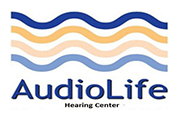
Is it even possible to comfortably wear hearing aids while you are also wearing your glasses, despite the fact that the two don’t seem very agreeable? How to wear both is a question that is asked a lot, particularly if you are considering behind-the-ear (BTE) hearing aids. People often wonder whether or not they can work together comfortably. Yes is the answer.
If you wear glasses, there are certain things to consider when investing in hearing aids. Use these guidelines to be sure your hearing aids and glasses work well together.
There Are Several Types of Hearing Aids That Could Work For Your Needs
There is a lot to think about when you shop for hearing aids, even when you don’t happen to wear glasses. You can get hearing aids in many styles, shapes, and sizes. If you like fancy colors, you can get that also. Today’s hearing aids are a lot better than your grandpa’s.
Begin the process by really learning about what kinds of hearing aids are available. They divide into three basic categories:
- In-the-canal (ITC) – This style is very much like the ITE model but it sits deeper inside the ear, making them pretty much invisible.
- In-the-ear (ITE) – As the name indicates, this style of hearing aid fits directly into the opening of the ear canal with nothing sitting behind the ear.
- Behind-the-ear (BTE) – This is an older style of hearing aid, but today’s version of this technology is far more advanced. With this style, the main section of the device sits directly behind the ear with clear tubing that connects to an earmold resting in the opening of the ear canal. Open-fit models are essentially the same setup except without the earmold.
If you wear glasses, you can stay away from a lot of issues with ITE and ITC models. Once you decide on the physical style, it’s time to review the features of different hearing aids.
Getting to Know The Different Features
Essentially, it’s really the features that should drive your decision as you look for hearing aids, not the shape. Hearing aid technology is evolving all the time, so features constantly change. Watch for some of these common ones:
- T-coil – This function allows you to hear better while using a land-line phone. T-coil technology is useful if you are listening to people talk through a speaker like at church or on the radio.
- Directional microphone – This will help pinpoint the sound you need to hear when you are in a noisy spot. For instance, if someone is talking to you at a party, you will be able to hear their words easily despite the noise around you.
- Noise reduction – Filters out background noise by amplifying one channel to enhance speech.
Your objective is to determine the ideal set of features to fit your lifestyle. At this point, you can decide on the style of hearing aid.
What if You Want BTE Hearing Aids?
Glasses and BTE hearing aids absolutely can be worn together. The secret is to wear both of these essential accessories properly, so they fit comfortably. Here are some tips:
- Get used to putting your glasses on first and then your hearing aids. Positioning of the hearing aid unit is a little bit more flexible so you can work it in around the arm of the glasses to make it comfortable. Check in the mirror after placing the hearing aid so you know it looks discrete and isn’t hanging off your pinna, which is the outer part of the ear.
- Taking your glasses off in a forward motion, with both hands, is something you should practice until it’s a habit. It will take some time before you form a habit of taking them off like this. The practice will be reinforced each time you knock off your hearing aid.
- Before you make a purchase look carefully at the size of the BTE. Although the standard size will still work with glasses, it’s a little bulky. A newer style choice is the mini BTE. The part that fits behind the ear is a lot smaller for increased comfort and to reduce the feedback that you sometimes get with the BTE units. You have to try out both styles to determine which one works best.
There are some people that will need to stay with ITE or ITC devices. For instance, if you take your glasses off a lot, BTE devices will be a much bigger hassle. Children will usually have problems with this type of hearing aid and also adults with small ears. Which style is best for you can be determined if you schedule an appointment with a hearing aid specialist and take advantage of the free trial. Trying the different styles is the only way you will know which style works best for you.
